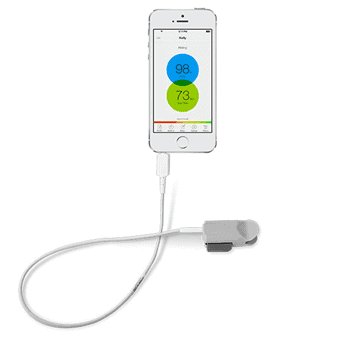Although most people believe that they have never used a pulse oximeter, almost all of us have throughout our lives. The small, pocket sized devices that nurses and physicians place on your fingertip at the beginning of every appointment is a pulse oximeter. So what are tiny devices measuring? Pulse oximeters are used to measure blood oxygen saturation levels to ensure there is an adequate amount of oxygen in the blood. Too much or too little oxygen can lead to serious health implications in people of all ages.
Pulse oximeters are not only used in medical settings, but also for at home and on the go use. Some of the many populations that likely carry a pulse oximeter on hand at all times include those with respiratory issues, heart conditions, like COPD, and asthma to name a few. By detecting low blood oxygen levels as soon as possible, necessary precautions can be taken to increase oxygen levels.
While pulse oximeters have been on the market for decades, recent technological advances in the life saving device have now made use of pocket pulse oximeters more accessible than ever.
How Smart Pulse Oximeters Work
The latest pulse oximeters, often referred to as smart pulse oximeters, can now be used in conjunction with smartphones and tablets. The smart pulse oximeters can be plugged into Android and iOS devices, so no matter which smartphone or tablet you use, your pulse oximeter will be ready to connect. The new oximeters were designed with maximum efficiency and reliability in mind, allowing users to access readings 24/7.
Smart pulse oximeters measure blood oxygen saturation levels based on the amount of red and infrared light absorption. Depending on how much light reaches the light detector on the device, the pulse oximeter is able to determine how much light was absorbed. Pulse oximeters are a safe and accurate way to test the bloods content without having any invasive testing.

Benefits to Smart Pulse Oximeters
One of the biggest benefits to smart pulse oximeters is that the devices can be easily read on whatever device you prefer. After downloading the corresponding app, all blood oxygen saturation levels, pulse rates, respiration and your perfusion index will be displayed on the phone or tablet. Choose whichever device you prefer, plug in and the smart pulse oximeter does all of the work for you.
Another feature that separates smart pulse oximeters from conventional oximeters is that there are no batteries required to power these devices. Because the pulse oximeter is plugged into the user’s smartphone there is no need for batteries, creating a more reliable device. You never have to worry about whether or not the device has power and ultimately save money without the need to replace batteries.
Smart pulse oximeters also allow users to store and track readings over time. The device can be used to track monitoring so that you can determine how well any changes made have been beneficial to your overall health. Both short and long term monitoring are available on smart pulse oximeters, too. Whether you’re in need of a quick read or a long term recording, the smart oximeter has you covered.
The post Advances in Pulse Oximeter Technology appeared first on Nigeria Technology Guide.

No comments:
Post a Comment